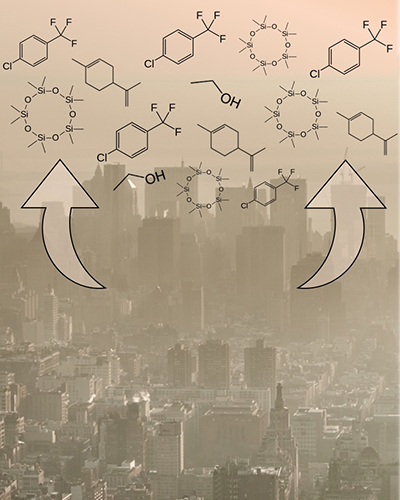A .gov website belongs to an official government organization in the United States.
A lock () or https:// means you've safely connected to the .gov website. Share sensitive information only on official, secure websites.
9 July 2020

The U.S. Environmental Protection Agency (EPA) has announced $6 million in research grants to nine institutions to improve air quality models used to simulate ozone, particulate matter (PM), regional haze, air toxics, and emerging pollutants. Researchers from CIRES and CSL will receive funding through EPA's Science to Achieve Results (STAR) Program to incorporate volatile chemical products compounds to current chemical mechanisms to improve air quality model predictions of ozone in U.S. urban areas.
Matthew Coggon, Georgios Gkatzelis, Rebecca Schwantes, Meng Li, and Brian McDonald will evaluate and update model chemical mechanisms to account for emissions of volatile chemical products (VCPs) and investigate their contribution to urban ozone pollution. This work follows research published in Science by McDonald et al. in 2018 that showed that emissions of these pollutants compromise a large fraction of urban volatile organic compound (VOC) emissions and may be significant in producing both ozone and aerosols, which are the primary components of smog.
Investigators: M. Coggon, G. Gkatzelis, R. Schwantes, M. Li, B. McDonald, Evaluating chemical mechanisms with recent field data to account for the contributions of volatile chemical product emissions to urban ozone pollution, Project period: 1 August 2020 - 31 July 2023.
Urban emissions of volatile organic compounds (VOCs) in the United States are no longer solely dominated by tailpipe emissions. Research by McDonald et al. 2018 first showed that emissions from "volatile chemical products", or VCPs – including personal care products, cleaning agents, coatings, adhesives, and pesticides – may significantly contribute to VOC emissions, ozone formation, and SOA in urban areas. VCP sources emit a wide variety of saturated, unsaturated, and oxygenated VOCs; however, current chemical mechanisms may not adequately represent the atmospheric chemistry of VCP emissions in urban environments. We will use recent ambient measurements of VCP compounds in New York City and other U.S. urban areas to evaluate and update chemical mechanisms in the nearly-explicit Master Chemical Mechanism (MCM) and the condensed Regional Atmospheric Chemistry Mechanism, version 2 (RACM2).
Our objective is to add VCP compounds to current chemical mechanisms, validated by recent field measurements and assessed by 3D Eulerian modeling using WRF-Chem, to better represent the chemistry of modern urban air pollution in the United States.
We will use VOC measurements taken in New York City during the winter and summer of 2018 to identify VOCs whose OH reactivity is currently missing, or misrepresented, in chemical mechanisms. We will incorporate the known chemistry of measured VOCs, including those from VCP emissions, into the MCM and RACM2, and evaluate the performance of these mechanisms in predicting ozone and secondary VOC formation using observationally constrained box models. We will incorporate RACM2 updates into the Weather Research and Forecasting with Chemistry (WRF-Chem) model, a regional chemical transport model currently set up to simulate the 2018 summer ozone season in NYC, and evaluate the performance of the mechanism in quantitatively reproducing observed mixing ratios of ozone and secondary VOCs.
We will produce an updated condensed chemical mechanism verified by field measurements, and use box and WRF-Chem modeling to develop ozone isopleths and identify the key VOCs contributing to ozone formation in U.S. urban areas.